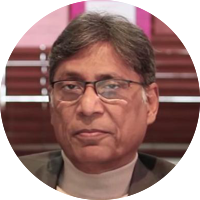Shri Ram
One of the most revered deities of Hinduism, Ram is known by yet another name, Ramachandra. He is supposed to be the seventh incarnation of God Vishnu. He was born in Ayodhya of Kaushalya and king Dashrath. Dashrath gave three siblings to Ram from two more wives Kaikayi and Sumitra. Kaikayi gave birth to Bharat and Sumitra gave birth to Lakshman and Shatrughna. When Ram grew up, he was married to Sita, the daughter of King Janak.
In spite of having royal lineages, both Ram and Sita were destined to suffer. Ram was preordained to be in exile for as long as fourteen years in a jungle. When he left his father’s kingdom, he was accompanied by Sita and Lakshman. It was during his exile that Sita was kidnapped by Ravan, the demon king who was himself a high profile Brahmin and scholar. With the kidnapping of Sita, Ram’s suffering grew manifold which both Ram and Lakshman dealt with great caution and care. They brought destruction to Ravana finally and ensured the release of Sita. Sita’s story is not merely one of kidnapping and release; it is about the establishment of dharma in dealing with the matters of life and the world. After fourteen years of exile, when Ram returned to Ayodhya with Sita and Lakshman, he was given an emotionally charged reception. Subsequently, Ram took over as the king.
Ram has been presented as the real protagonist in Ramayan which has stayed on as one of greatest epics of all times. He has been represented as an embodiment of virtue, perseverance and integrity. This image of Ram has travelled through time and place in a variety of verbal and performative texts. While Ram has been established as Maryadapurshottam (a supreme being of supreme honour) on account of being an ideal son, a caring husband and an epitome of truth and morality, Sita has passed down in history as an archetype of devotion and loyalty.
Reference: Labrez hai sharaab-e-haqeeqat se jaam-e-Hind/Sab falsafi hain khitta-i-maghrib ke Ram-e-Hind (Mohammad Iqbal), Zindagi ki rooh tha roohaaniyat ki shaan tha/Wo mujassam roop mein insaan ka irfaan tha (Saghar Nizami), Naqsh-e tehzeeb-e-Hunood ab bhi numaayaan hai agar/To wo Sita se hai, Lacchman se aur Ram se hai (Zafar Ali Khan), Rasm-o-riwaaj-e Ram se aari hain shar pasand/Raavan ki neetiyon ke pujaari shar pasand (Rahbar Jaunpuri. Also see: https://www.rekhta.org/nazms/raamaaen-kaa-ek-siin-rukhsat-huaa-vo-baap-se-le-kar-khudaa-kaa-naam-chakbast-brij-narayan-nazms?lang=urhttps://www.rekhta.org/nazms/duusraa-ban-baas-kaifi-azmi-nazms
One of the most revered deities of Hinduism, Ram is known by yet another name, Ramachandra. He is supposed to be the seventh incarnation of God Vishnu. He was born in Ayodhya of Kaushalya and king Dashrath. Dashrath gave three siblings to Ram from two more wives Kaikayi and Sumitra. Kaikayi gave birth to Bharat and Sumitra gave birth to Lakshman and Shatrughna. When Ram grew up, he was married to Sita, the daughter of King Janak.
In spite of having royal lineages, both Ram and Sita were destined to suffer. Ram was preordained to be in exile for as long as fourteen years in a jungle. When he left his father’s kingdom, he was accompanied by Sita and Lakshman. It was during his exile that Sita was kidnapped by Ravan, the demon king who was himself a high profile Brahmin and scholar. With the kidnapping of Sita, Ram’s suffering grew manifold which both Ram and Lakshman dealt with great caution and care. They brought destruction to Ravana finally and ensured the release of Sita. Sita’s story is not merely one of kidnapping and release; it is about the establishment of dharma in dealing with the matters of life and the world. After fourteen years of exile, when Ram returned to Ayodhya with Sita and Lakshman, he was given an emotionally charged reception. Subsequently, Ram took over as the king.
Ram has been presented as the real protagonist in Ramayan which has stayed on as one of greatest epics of all times. He has been represented as an embodiment of virtue, perseverance and integrity. This image of Ram has travelled through time and place in a variety of verbal and performative texts. While Ram has been established as Maryadapurshottam (a supreme being of supreme honour) on account of being an ideal son, a caring husband and an epitome of truth and morality, Sita has passed down in history as an archetype of devotion and loyalty.
Reference: Labrez hai sharaab-e-haqeeqat se jaam-e-Hind/Sab falsafi hain khitta-i-maghrib ke Ram-e-Hind (Mohammad Iqbal), Zindagi ki rooh tha roohaaniyat ki shaan tha/Wo mujassam roop mein insaan ka irfaan tha (Saghar Nizami), Naqsh-e tehzeeb-e-Hunood ab bhi numaayaan hai agar/To wo Sita se hai, Lacchman se aur Ram se hai (Zafar Ali Khan), Rasm-o-riwaaj-e Ram se aari hain shar pasand/Raavan ki neetiyon ke pujaari shar pasand (Rahbar Jaunpuri. Also see: https://www.rekhta.org/nazms/raamaaen-kaa-ek-siin-rukhsat-huaa-vo-baap-se-le-kar-khudaa-kaa-naam-chakbast-brij-narayan-nazms?lang=urhttps://www.rekhta.org/nazms/duusraa-ban-baas-kaifi-azmi-nazms
Additional information available
Click on the INTERESTING button to view additional information associated with this sher.
About this sher
Lorem ipsum dolor sit amet, consectetur adipiscing elit. Morbi volutpat porttitor tortor, varius dignissim.
rare Unpublished content
This ghazal contains ashaar not published in the public domain. These are marked by a red line on the left.

